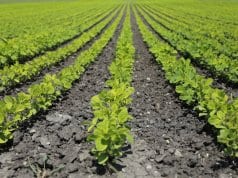Habitat destruction is likely the most significant danger facing threatened and endangered animal species. Habitat destruction occurs when humans damage a habitat, making it difficult for some or all of the local wildlife species to survive, or they convert a habitat into a form that is not longer suitable for animals.
Below, we’ll talk about a few of the different forms of habitat destruction below, explain how the changes affect the local wildlife species, and point out a few of the species that are currently under the greatest threat from the problem.
Habitat Degradation
Habitat degradation occurs when humans leave a habitat intact but damage it in ways that make it unsuitable for animals.
One of the most widespread forms of habitat destruction is called habitat degradation. It occurs when humans damage a habitat, without completely destroying it. This can happen in a variety of ways, but it often occurs when humans pollute a habitat.

For example, people often use pesticides, herbicides and other agricultural chemicals to help improve the crop yields of farmers. However, these chemicals can make it impossible for local wildlife species to survive. This type of pollution often strikes insect and other invertebrate populations hardest. However, it also causes problems for animals like leopard frogs, American toads, and anoles, who feed heavily on insects.
Habitat Fragmentation
Habitat fragmentation refers to the separation of a large habitat into several smaller pieces.
Another very common way humans make habitats inhospitable is called habitat fragmentation. This often occurs when people build roads across previously undisturbed habitats, but it can also occur when people construct homes or commercial buildings.

This type of habitat damage affects large, terrestrial species most acutely. For example, mountain lions typically maintain large territories. But because humans have bisected their territories with roads and other construction projects, they are unable to move freely through the habitat.
Habitat fragmentation can also affect small species. The Appalachian cottontails and ruffed grouse are currently experiencing population declines as humans have divided their habitats into smaller plots of land.
Complete Habitat Destruction
Complete habitat destruction refers to the large-scale conversion of natural habitat into a form that precludes wild animals from living in the area.
Of all the types of habitat destruction threatening wild animals, the most damaging occurs when habitats are completely converted into areas that aren’t suitable for the local species. This often happens when humans build industrial complexes, commercial shopping areas or farmland.

Orangutans are one of the species that is most threatened by complete habitat destruction. These primates have lived in the forests of Borneo and Sumatra for millennia, but humans are busy converting the tropical forests of these areas into date palm plantations. These plantations are completely unsuitable habitat for the orangutans, and it has reduced the amount of livable space available to these charismatic animals.
In other cases, habitat destruction occurs when a habitat is damaged by the changing climate. Many coral reefs, for example, have died off completely in response to ocean acidification and rising water temperatures. This not only leads to the suffering of the coral animals themselves, but also the myriad fish and invertebrates that call coral reefs home.
What Can You Do to Help?
Despite the fact that powerful interests are causing most of the world’s habitat destruction, there are several things you can do to help imperiled species.
Habitat destruction is clearly one of the most significant threats facing the world’s wild animals. If an animal doesn’t have a suitable habitat, it may become extinct in short order. But while this may be disconcerting, there are a few things you can do to help put an end to the senseless destruction of habitat.
A few of the most helpful things you can do include the following:
- Contact your representatives at the local, state and federal level. Legislators have the ability to enact laws that protect habitats and prevent businesses from destroying important habitats. However, they’ll only do so if they believe their constituents care deeply about these issues. So, be sure to write, call or email your representatives and explain that habitat protection is important to you.
- Support companies that embrace eco-friendly practices. While many companies are responsible for destroying vast areas of habitat, others employ practices that help to protect local habitats. Support these companies by purchasing the goods and services they offer, to help them remain profitable. Over time, this will help put pressure on other companies to adopt similar, environmentally friendly practices.
- Clean up the litter in your area. Some of the most important things you can do to help protect local habitats are quite simple. Cleaning up the litter at your local park or greenspace, for example, can keep these locations habitable for local wildlife species. You can do this by yourself, with your family, or as part of a larger group, if you like.
- Discard refuse properly. Some types of trash can cause environmental problems that’ll damage habitats and threaten the lives of wild animals. This includes things like paint, pesticides, and a variety of household cleaners. Just contact your local sanitation department and solicit their advice for properly disposing of hazardous wastes.

Share Your Ideas!
We all have to do our part to protect animals from the threat posed by habitat destruction. But there are a variety of different things individuals can do to contribute to the cause.
What types of things can you think of that would help protect habitats for animals? Share your ideas in the comments below! Your suggestions may inspire a fellow reader to join the habitat-protecting movement.














![Red Angus Closeup of a beautiful Red Angus cowPhoto by: U.S. Department of Agriculture [pubic domain]https://creativecommons.org/licenses/by/2.0/](https://animals.net/wp-content/uploads/2020/03/Red-Angus-4-100x75.jpg)

